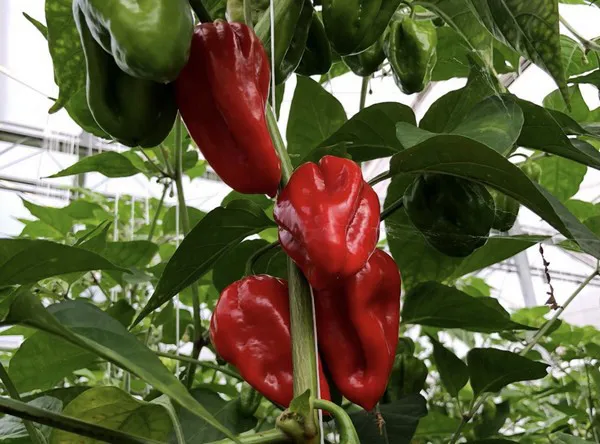"I've sent the first Dutch chilies out the door already," says Hamid Haddouch of Chili & Pepper. He points out that this means the pepper season is early again after all, despite growers' concerns about energy. Early-crop growers are picking particularly red habanero in abundance. "Last year, the first harvest was in late March and was early; this year, we're even earlier."

No shortages
The Netherlands had a relatively mild winter. The same is true, cold snaps aside, in the Mediterranean. Hamid supplies many chilies from Morocco, Rwanda, and Uganda. "There's still plenty of Moroccan supply since it hasn't been genuinely cold there either," he continues. In previous years, there were occasional shortages in the winter, but not this season. "Prices, too, have remained stable."
With these first local Dutch peppers, Hamid can expand his assortment nicely. "You can distinguish yourself with these. You want to offer as diverse a package as possible. I can do that with imports and my greenhouse crop," he explains.
Imports
Hamid has always had regular customers for his Ugandan chilies, including in Germany. "They want those peppers because of the unique flavor." By working with an established grower network, Chili & Pepper has the bothersome codling moth - which has made the trade from African countries quite difficult recently - 'under control.' "Every other shipment is tested for MRL, and plenty are still rejected. That makes it tough, but we're managing to supply our clients well with Ugandan peppers," he says.
Haddouch is still active in the United Kingdom too. There, demand for hotter chilies has increased in recent years. Brexit woes have complicated trade, though. "It hasn't made things any easier."
Cold greenhouses
As the Dutch season progresses, there are more and more peppers. Yellow habanero peppers are often a little later than red ones but are on their way. Harvesting in the unheated greenhouses is still some time away. Hamid sees that more growers decide not to heat their greenhouses and wait for the weather before growing. "There's enough light, but for an early crop, you have to stoke, and fewer growers are doing that," he remarks. Yet apart from that, Hamid sees few major changes in acreage.
When production gets going in the cold greenhouses, too, the market will come under more pressure. "Plenty of Spanish and, say, French products will also be available. That could complicate things." Hamid is active in the French market too. Some of his buyers there prefer French peppers as soon as it is possible. "But outside local peak productions, Dutch chilies keep gaining importance," he concludes.
For more information:
Hamid Haddouch
Chili & Pepper The Netherlands
Email: hamid@chili-pepper.nl
www.chili-pepper.nl
